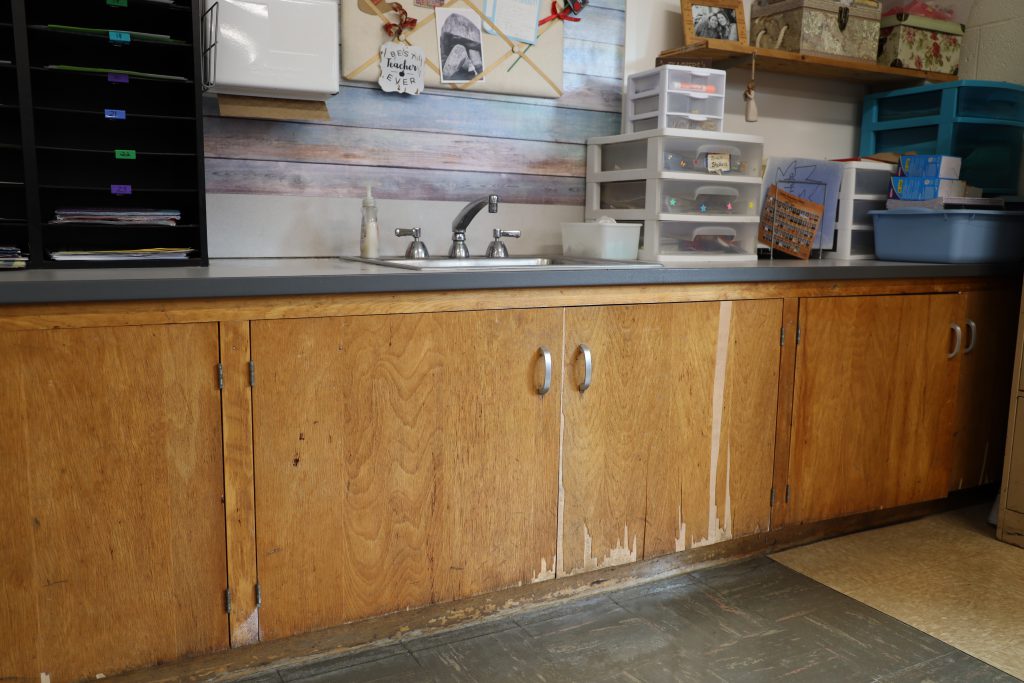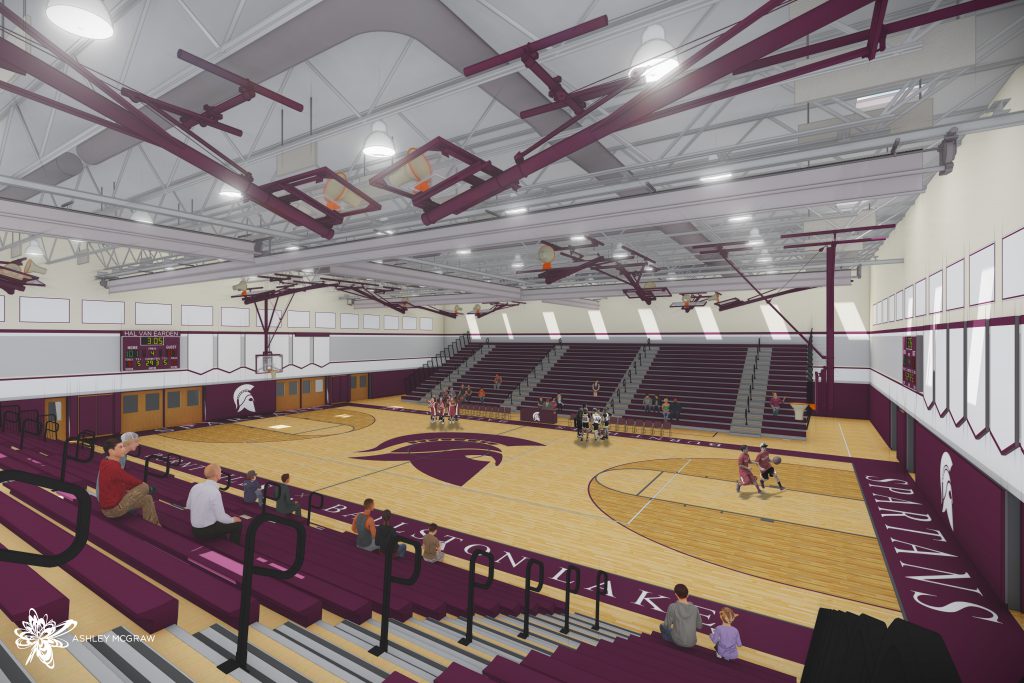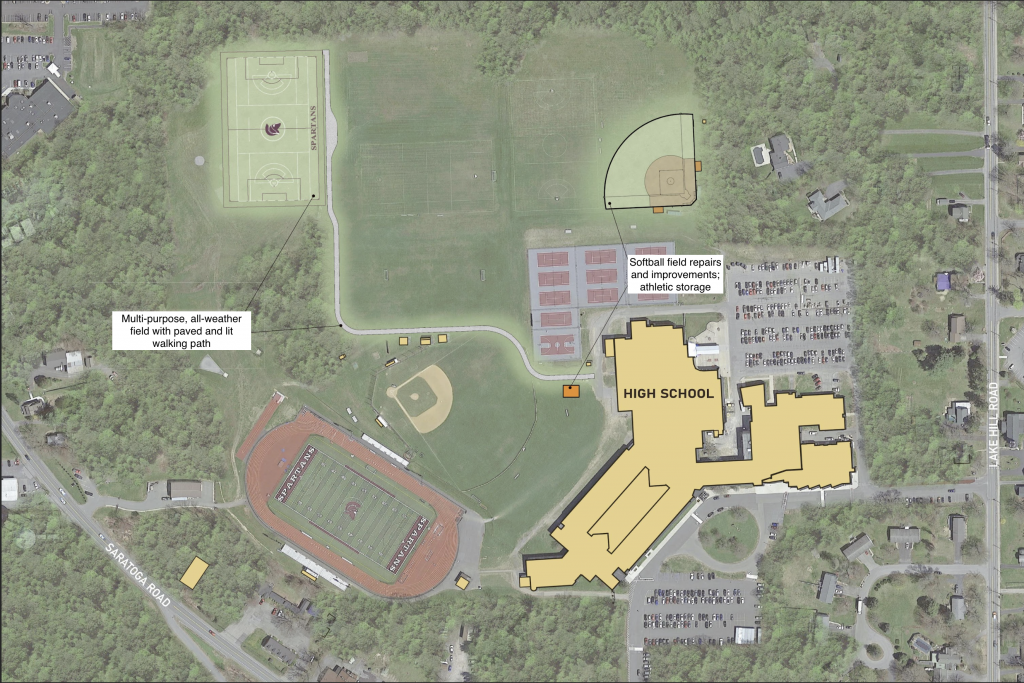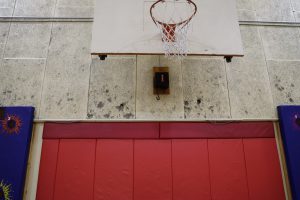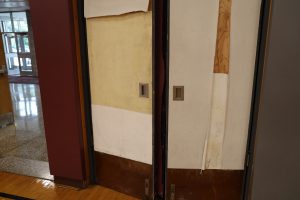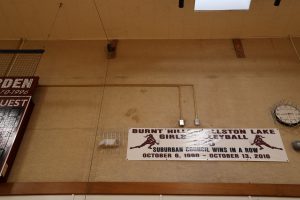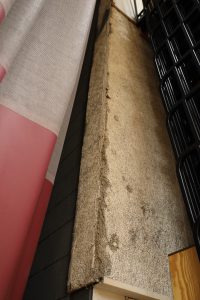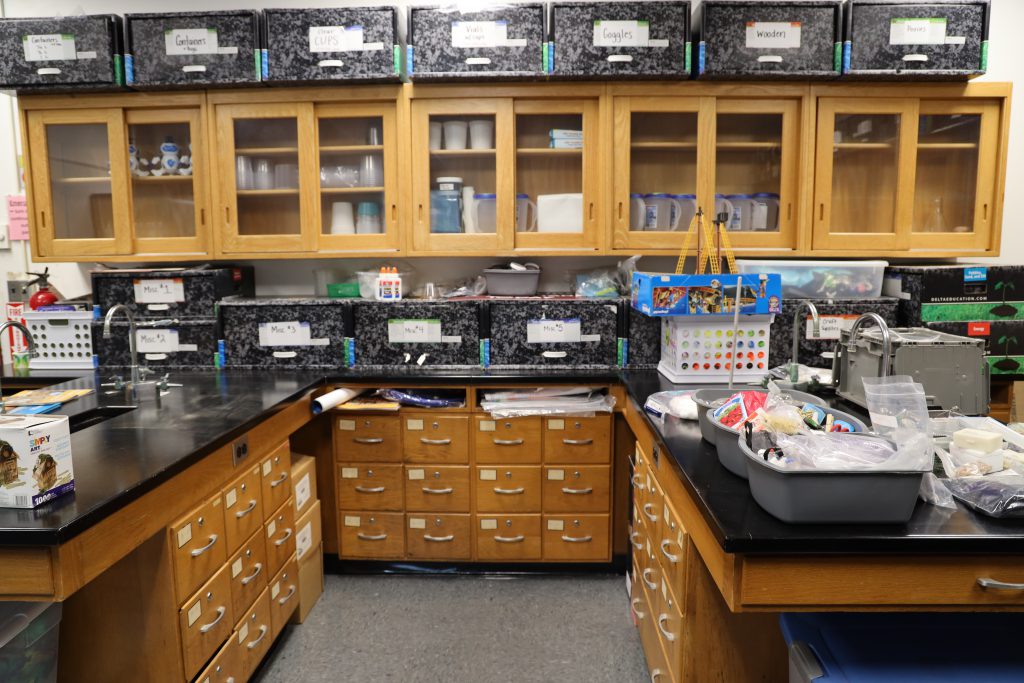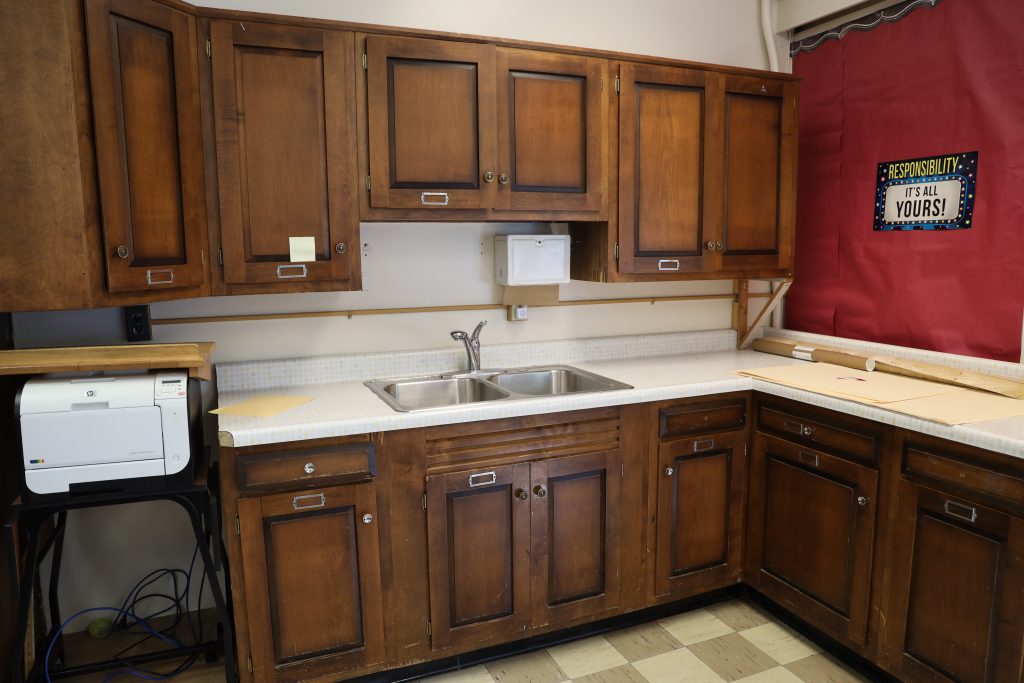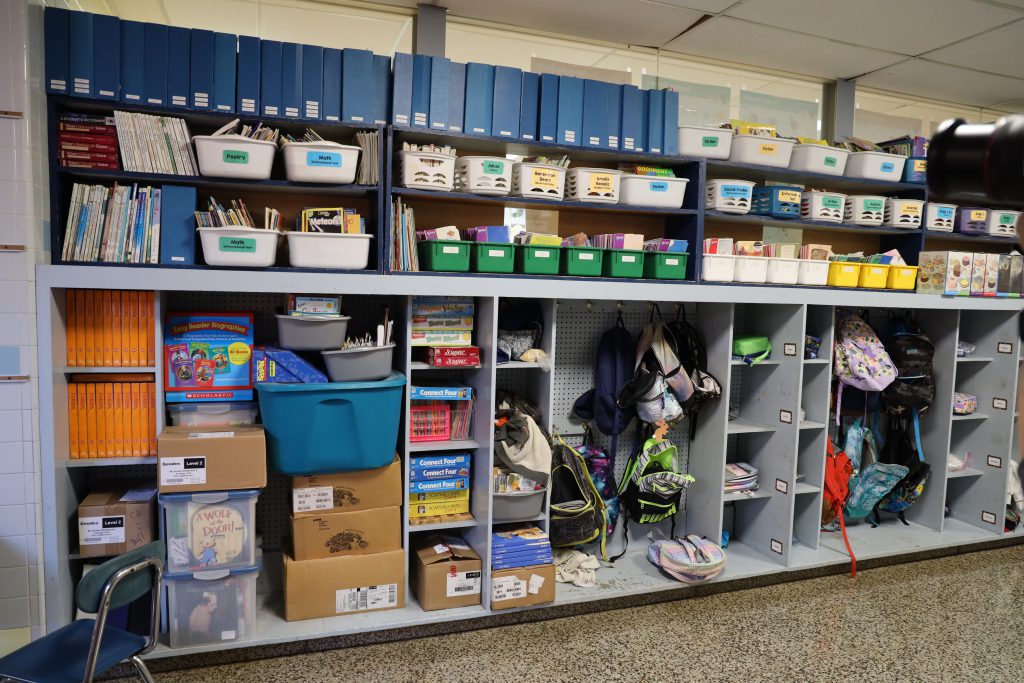 Lack of storage at all three elementary schools results in students’ belongings, classroom supplies, and instructional materials jammed together in hallways.
Lack of storage at all three elementary schools results in students’ belongings, classroom supplies, and instructional materials jammed together in hallways.
Elementary Schools Redesign to Support Learning
Nearly half, or $22.34 million, of the proposed renovation project is earmarked for significant improvements and upgrades to all three aging elementary schools to bring them up to date and align them with other district instructional facilities that have been upgraded over the past 10 years.
As the learning process for today’s students evolves, the design of effective classrooms and other instructional spaces evolve as well. BH-BL’s elementary schools are all more than 60 years old and were designed when instruction was primarily structured with students sitting at desks in rows facing a chalkboard. Today’s students, however, are being taught collaborative learning practices, how to work in small groups on multi-faceted projects, and how to properly weave technology into their learning and work environments.
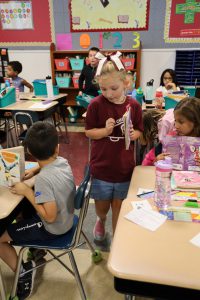
Additionally, the buildings lack the space needed to educate the whole child, such as through small group instruction or extra assistance and personal wellness. Currently, BH-BL elementary schools are at maximum capacity. Compared to seven years ago, there are an additional 200+ students being educated in the three elementary schools. Enrollment projections show more growth over the next several years before leveling off. Simply put, there’s not enough room and the space that is there was designed for how schools used to educate students more than six decades ago.
Photo: A Pashley student squeezes between desks in an over-crowded, makeshift classroom that used to be the nurse’s office. The nurse’s office is now in the faculty room, and the faculty room is now on the school’s stage.
“To say our elementary schools are bursting at the seams would be an understatement,” says Committee member and Pashley parent Brian Brewer. “During the tours, we saw ends of hallways and other spaces that were converted into areas for small groups of students. But, the spaces lack privacy and noise barriers. There are classrooms and hallways with instructional materials piled and crammed because of a lack of storage space. And while the committee was impressed with how the staff has maximized space, hearing again and again they are making do just doesn’t seem right. The bottom line is we need to make things better for BH-BL students.”
To improve the learning environment, the following renovation and upgrade projects are proposed at Charlton Heights, Pashley, and Stevens Elementary Schools:
- Renovating and modernizing numerous old and worn classrooms to bring them up to a common district standard, including brightening the interior atmosphere with more natural light and installing versatile overhead lighting and new ceilings.
- Replacing older doors and windows that no longer properly fit in their original frames and installing new locking mechanisms on doors.
- Replacing aged and worn floors and walls, and applying fresh paint throughout the buildings.
- Replacing time-worn and damaged classroom fixtures, such as cabinets and counters, to create streamlined and efficient spaces, and adding storage areas and student-centered shelving and work stations.
- Replacing the older, outdated furniture with new, flexible classroom furniture that’s adaptable for various learning styles (i.e., high-top desks and seating for the back of the classroom, standing desks, small group seating, etc.).
- Completely renovating and modernizing all of the original outdated bathrooms for both students and faculty. (See Critical Infrastructure Upgrades.)
- Make better use of the hill on Steven’s playground by constructing an outdoor amphitheater with tiered-seating, stairs, and an accessible ramp.
- Building a new four-classroom addition at Pashley to account for increases in elementary enrollment and programmatic additions.
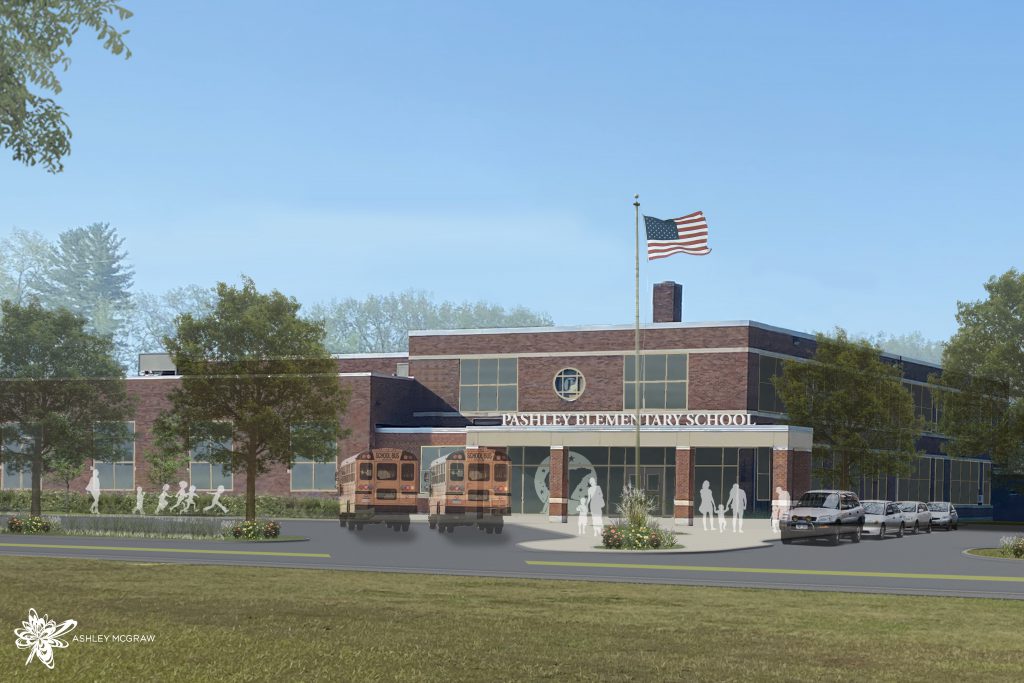
An architectural rendering of Pashley Elementary School which is slated for facade renovations and a reconfigured bus loop, student drop off/pick up lanes, and new parking areas.
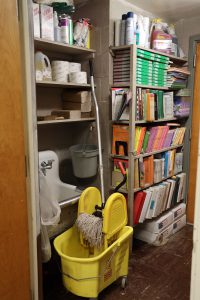 LEFT: A custodial closet with cleaning supplies is also home to instructional materials. Crammed spaces like this can be found at every elementary school.
LEFT: A custodial closet with cleaning supplies is also home to instructional materials. Crammed spaces like this can be found at every elementary school.
RIGHT: Worn classroom fixtures that have been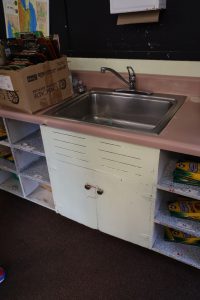 used by students for the past 60 years, can be found at all elementary schools
used by students for the past 60 years, can be found at all elementary schools
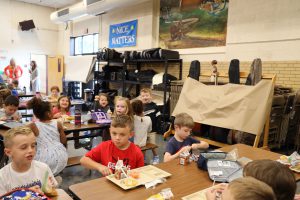 LEFT: Students at Pashley eat lunch amongst the school’s musical instruments that are stored in the cafeteria. The stage storage area is too full and the stage is actually the faculty room now.
LEFT: Students at Pashley eat lunch amongst the school’s musical instruments that are stored in the cafeteria. The stage storage area is too full and the stage is actually the faculty room now.
Critical Infrastructure Upgrades for Efficiency
The proposal includes nearly $20.48 million for critical infrastructure improvements districtwide. These are largely behind the scenes projects that are necessary to keep our schools and grounds in safe, working order. For example, leaking roofs, failing HVAC systems, or faulty kitchen equipment can completely disrupt the learning environment taking away from valuable instructional time. And much like a home, the older the building the more likely repairs will be needed from age and regular use. Multiply that hundreds of times over and you’ll have an idea of what happens to BH-BL’s five schools and athletic fields, which serve 3,100 active students and 650 or more staff, on a daily basis.
All BH-BL schools are 60 or more years old, which is why the infrastructure of each building is assessed annually and items are placed on a rotating repair or replacement schedule to avoid any major breakdowns or mishaps.
“The conditions and safety of our buildings and grounds is paramount,” explains Facilities Director Dan Diggins. “If the infrastructure protecting instructional spaces is compromised, it will undoubtedly compromise the integrity of the entire school. Our goal is to ensure our students and staff have safe, comfortable environments that help foster learning.”
Projects in the Critical Infrastructure upgrades include:
- Considerable repair or replacement of nearly 59,000 square feet of roofing sections across all district buildings. This will target the oldest areas of the district’s 13 acres of roofing that have been repaired several times over and are in danger of failing or are already causing interior leaks.
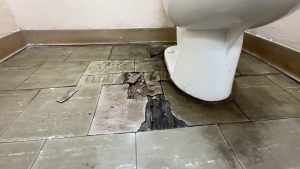
- Replace heating, ventilation, and air conditioning (HVAC) systems districtwide. Many units are so outdated that repair parts are obsolete or the unit has become too costly to continue fixing.
- Fully renovating all original bathrooms throughout the entire district that weren’t included in past projects. This includes elementary classroom bathrooms; student and faculty hallway bathrooms; student/community use bathrooms near the high school and middle school gyms; and all locker room bathrooms at all five schools.
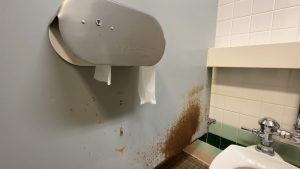
- Constructing an egress road from O’Rourke Middle School’s bus loop out to High Mills Road for more efficient traffic flow and to lessen congestion on Lakehill Road during school arrival and dismissal.
- Replacing the perimeter fencing around all five schools for security and safety purposes.
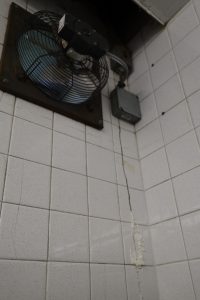
- Significantly reconfiguring the parking lots and bus loops at Pashley and Charlton Heights to reduce congestion and improve traffic flow during arrival and dismissal. This includes separating the bus loops from car traffic, too.
- Reconfiguring and separating the high school custodial and food service receiving areas, which are some of the oldest areas in the building, and upgrading the existing space to improve storage and work areas.
- Renovating and expanding the Instructional Technology Center, which is currently housed in one of the original classrooms at the high school. The IT center is the hub and control station for the district’s entire technology infrastructure. Proper ventilation and sufficient spacing is needed to keep the servers safe from overheating.
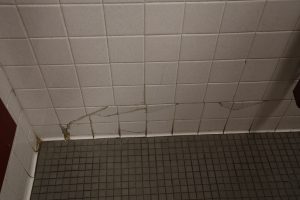
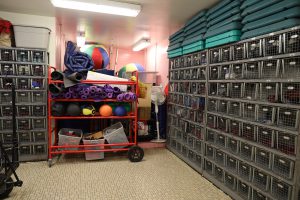 LEFT & ABOVE: Cracked wall tiles can be found in early all bathroom districtwide and on the walls throughout Pashley.
LEFT & ABOVE: Cracked wall tiles can be found in early all bathroom districtwide and on the walls throughout Pashley.
LEFT: The interior of a locker room at the elementary schools. The space is crammed, due to lack of storage and the “lockers” are the originals aging in around 60 years old.
LEFT: A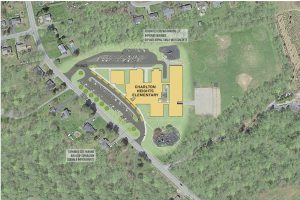 rendering of the new bus loop and parking lots at Charlton Heights Elementary School.
rendering of the new bus loop and parking lots at Charlton Heights Elementary School.
Physical Education & Athletic Field Upgrades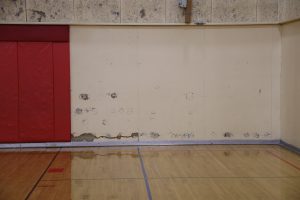
The proposal also includes $7.55 million for districtwide physical education and athletic field upgrades. There are several improvement efforts planned for each school gym, such as repairing damaged walls and replacing the time-worn mechanical dividing walls and old lighting and doors. Additionally, at O’Rourke Middle School, the aged bleachers and inefficient HVAC systems would be replaced and air conditioning added.
The high school gym—which is also used daily for physical education classes as well as for districtwide events, community activities, and sports games/practices—is slated to be fully renovated in its current footprint. (Sample rendering, right.) This includes repairing the floor and damaged walls, replacing and raising the deteriorating ceiling, improving lighting, replacing the rundown bleachers and other old fixtures, upgrading the inadequate HVAC systems, and adding air conditioning. (See photos below.)
Also included in the proposal is improving the existing softball field (i.e., better water drainage, pitching mound, dugouts) and building a multi-purpose, all-weather field at the high school. The new field would be an extension of the gymnasium and used for outdoor physical education classes during the day as well as for athletic team competitions and practices after school. It would also be available in the evenings and weekends for community team use. And, because of the durability of an all-weather field (easy snow removal, dry surface), it can be used for nearly nine months out of the year. A multi-purpose field would also allow more BH-BL athletic teams use of the space especially since Centennial field is in constant demand due to the sheer number of teams that currently use it.
“I have always been an advocate for kids being able to be as active as possible while at school, both during the school day and through athletics,” says Capital Project Committee member and High School parent Cal Houghton. “Our athletic facilities are where our community comes together. It’s where we show our support and build Spartan pride. Right now, though, these spaces are really worn down and inadequate for the amount of use they receive on a daily basis.”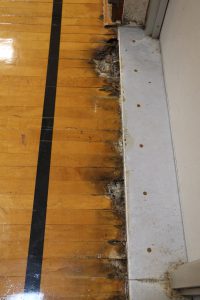
RIGHT : A section of the high school gym floor that is rotted and deteriorated, and needs to be repaired or replaced.
BELOW: Daily use of the district’s gyms for 60+ years results damaged walls in need of repair.
LEFT: The old and worn out dividing wall at the high school. Each school has dividing walls in similarly poor condition, and are all all slated for replacement.
BELOW: Damaged gym walls and holes in the high school bleachers.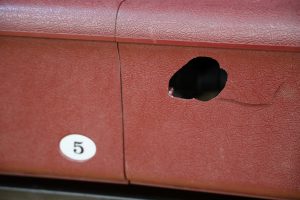
Instructional Innovation Improvements
Included in the capital project proposal is $3.55 million to renovate and update some of the oldest classrooms in the high school and middle school that weren’t included in past projects.
Renovated High School Science Labs
This includes fully renovating the oldest science labs at the high school. These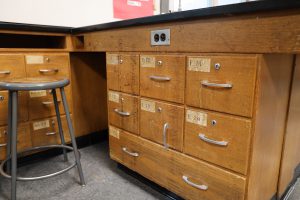 labs are outdated, crowded, lack appropriate gas and water connections, and are awkwardly arranged for today’s learning environment. This makes it difficult to conduct scientific investigations and experiments using modern-day technology and equipment.
labs are outdated, crowded, lack appropriate gas and water connections, and are awkwardly arranged for today’s learning environment. This makes it difficult to conduct scientific investigations and experiments using modern-day technology and equipment.
To better align the existing labs with the school’s other updated science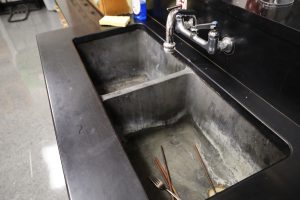 rooms, the proposal includes installing new sinks, new fixtures, gas jets, and safety equipment. The space will also be fully redesigned to include student work stations and teacher demonstration stations.
rooms, the proposal includes installing new sinks, new fixtures, gas jets, and safety equipment. The space will also be fully redesigned to include student work stations and teacher demonstration stations.
Renovated Middle School Classrooms
At O’Rourke Middle School, improvement projects include 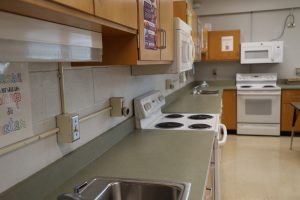 completely renovating the outdated Special Education suite and several other instructional spaces, as well as redesigning and updating the original three Family and Consumer Sciences (FACS) rooms.
completely renovating the outdated Special Education suite and several other instructional spaces, as well as redesigning and updating the original three Family and Consumer Sciences (FACS) rooms.
Like most classrooms designed in the 1960s, the existing FACS rooms are not conducive for today’s hands-on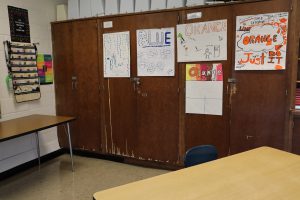 experiential approach to learning. FACS courses are taught in the context of real-life situations in laboratory-like settings and involve research, class discussions, and group activities. The existing rooms lack efficient space and modern functionality that students would experience in real-world situations and environments.
experiential approach to learning. FACS courses are taught in the context of real-life situations in laboratory-like settings and involve research, class discussions, and group activities. The existing rooms lack efficient space and modern functionality that students would experience in real-world situations and environments.


